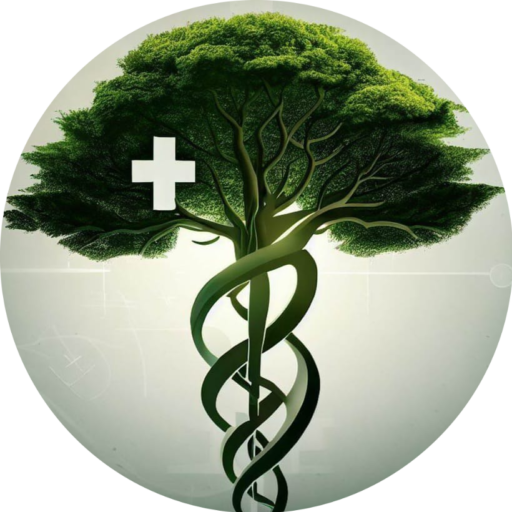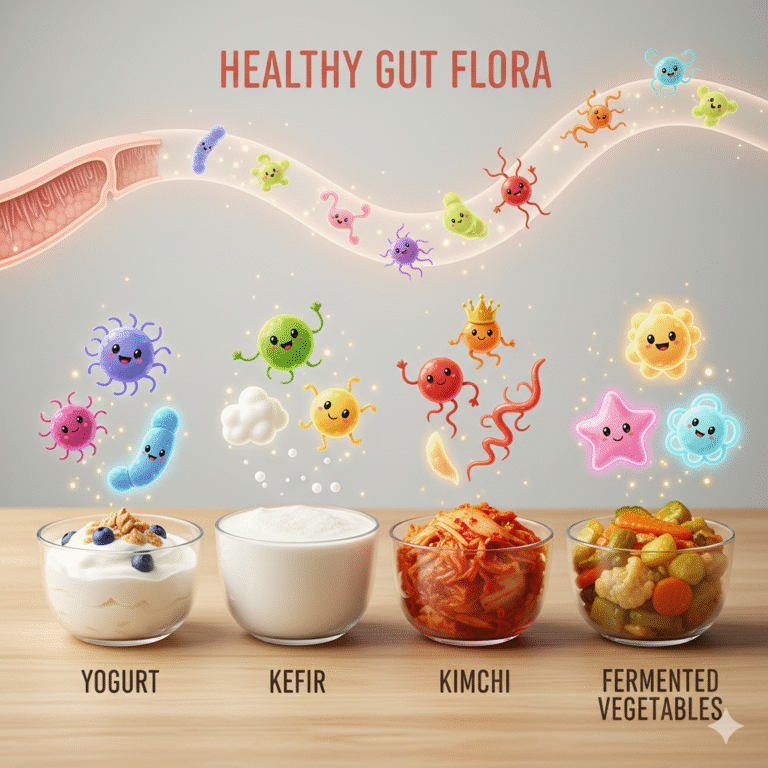Who Needs Extra Care This Winter: Why Health Problems Rise & How to Stay Safe
सर्दियों में किन लोगों को विशेष सावधानी की ज़रूरत है — क्यों बीमारियाँ बढ़ती हैं और कैसे सुरक्षित रहें
Why this matters
Winter brings cozy evenings and warm drinks, but it also brings real health risks for many people. Each year clinicians see more cases of breathing problems, heart attacks, strokes, joint flare-ups, blood-pressure spikes, headaches, and more. Understanding who is most vulnerable helps families prepare, protect loved ones, and reduce avoidable illness.
सर्दी सुहावनी शामें और गर्म पेय लेकर आती है, लेकिन यह कई लोगों के लिए वास्तविक स्वास्थ्य जोखिम भी लेकर आती है। हर साल चिकित्सक साँस लेने में तकलीफ, दिल के दौरे, स्ट्रोक, जोड़ों में दर्द, रक्तचाप में वृद्धि, सिरदर्द आदि के बढ़ते मामले देखते हैं। यह समझना कि कौन सबसे ज़्यादा असुरक्षित है, परिवारों को तैयार रहने, प्रियजनों की सुरक्षा करने और टालने योग्य बीमारियों को कम करने में मदद करता है।
Story — a winter morning that changed everything
Mrs. Khan always looked forward to winter chai with friends. This year, after a heavy foggy week, her husband found her unusually sleepy and short of breath. Her blood pressure had risen and she felt stiffness in her knees. At the same time their grandson, who has asthma, needed his inhaler more often. Small signs became an urgent reminder: winter affects many body systems at once.
श्रीमती खान को हर साल सर्दियों में दोस्तों के साथ चाय पसंद थी। इस बार, धुंध भरी हफ्ते के बाद, उनके पति ने देखा कि वे असामान्य रूप से सुस्त और सांस फूलने जैसी समस्या में हैं। उनका रक्तचाप बढ़ गया था और घुटनों में जकड़न थी। साथ ही उनका पोता, जिसे अस्थमा है, उसे अधिक बार इनहेलर की ज़रूरत पड़ी। छोटे संकेत एक जरूरी याद दिला गए: सर्दी एक साथ कई शारीरिक प्रणालियों को प्रभावित करती है।
Which conditions rise in winter — the short list
In cold months clinicians and public health data commonly report increases in: respiratory illnesses (colds, bronchitis, pneumonia, influenza), asthma and COPD exacerbations, high blood pressure and related heart attacks (MI), strokes, migraines and tension headaches, flare-ups of arthritis and joint pain, worsened diabetes control, worse hypothyroid symptoms, dry skin conditions (eczema, psoriasis), constipation and digestion problems, and seasonal mood changes (SAD).

ठंड के महीनों में डॉक्टर और सार्वजनिक स्वास्थ्य आंकड़े आमतौर पर इन चीज़ों में वृद्धि दिखाते हैं: श्वसन रोग (सर्दी, ब्रोंकाइटिस, निमोनिया, फ्लू), अस्थमा और COPD में बढ़ोतरी, उच्च रक्तचाप और उससे जुड़े दिल के दौरे (MI), स्ट्रोक, माइग्रेन और तनावजन्य सिरदर्द, गठिया और जोड़ो में जकड़न, मधुमेह नियंत्रण बिगड़ना, थायरॉइड संबंधी लक्षण बढ़ना, त्वचा के सूखे रोग (एक्जिमा, सोरायसिस), कब्ज और पाचन समस्याएँ, और मौसमी मूड बदलाव (SAD)।
Why does winter make these problems worse? — science & traditional views
- Cold weather causes blood vessels to constrict, which raises blood pressure and increases cardiac workload — a key reason heart attacks and strokes rise.
- Dry, cold air and indoor pollution (smog, smoke from heating) irritate airways and increase infections and COPD/asthma flares.
- Reduced sun exposure lowers vitamin D (affecting bone and immune health).
- People also move less, eat heavier food, and drink less water — all of which slow digestion and impair glucose control.

- ठंड रक्त वाहिकाओं को सिकोड़ देती है, जिससे रक्तचाप बढ़ता है और हृदय पर काम का बोझ बढ़ता है — यही एक प्रमुख कारण है कि दिल के दौरे और स्ट्रोक बढ़ते हैं।
- सूखा, ठंडा हवा और इनडोर प्रदूषण (धुंध, हीटिंग से धुआँ) वायुमार्ग को उत्तेजित करते हैं और संक्रमण तथा COPD/अस्थमा के अटैक बढ़ाते हैं।
- सूर्य की रोशनी कम होने से विटामिन D घटता है (जिसका प्रभाव हड्डियों और प्रतिरक्षा पर पड़ता है)।
- लोग कम चलने-फिरने लगते हैं, भारी भोजन खाते हैं और कम पानी पीते हैं — ये सभी पाचन धीमा करते हैं और ग्लूकोज नियंत्रण बिगड़ता है।
From a traditional perspective, seasonal shifts increase bodily ‘congestion’ and imbalance, promoting stiffness, mucus retention, and sluggish digestion — concepts that align with modern findings about colder-season physiological changes.
पारंपरिक दृष्टि से, मौसमी बदलाव शरीर में जमाव और असंतुलन बढ़ाते हैं, जिससे जकड़न, बलगम बनना और पाचन में सुस्ती जैसी समस्याएँ बढ़ती हैं — ये विचार आधुनिक खोजों के साथ मेल खाते हैं जो सर्दियों में होने वाले शारीरिक परिवर्तनों को दर्शाते हैं।
Who needs to be extra careful — patient groups and why
- Elderly people: Age reduces reserve immunity and cardiovascular resilience. In winter they have higher risks of pneumonia, heart attacks, and worsening mobility. Keep their environment warm, ensure vaccinations, and monitor medications and hydration.
बुजुर्ग: उम्र के साथ प्रतिरक्षा और हृदय सहनशीलता घटती है। सर्दियों में उन्हें निमोनिया, दिल के दौरे और चलने-फिरने में दिक्कत का ज्यादा खतरा रहता है। उनका कमरा गर्म रखें, टीकाकरण कराएँ और दवाइयों व हाइड्रेशन की नियमित जाँच करें।
2. People with chronic lung disease (asthma, COPD): Cold, dry air and pollution provoke bronchospasm and mucus production, making breathing harder and increasing hospitalization risk. Keep inhalers, follow action plans, and avoid early-morning outdoor exposure in heavy smog.
जिन्हें क्रॉनिक फेफड़ों की बीमारी है (अस्थमा, COPD): ठंडी और सूखी हवा तथा प्रदूषण ब्रोंकस को सिकोड़ते हैं और बलगम बढ़ाते हैं, जिससे साँस लेने में मुश्किल और अस्पताल की ज़रूरत बढ़ सकती है। इनहेलर रखें, उपचार योजना का पालन करें, और धुंध वाले मौसम में सुबह जल्दी बाहर न जाएँ।
3. Cardiac & hypertensive patients: Constricted vessels and higher blood pressure increase myocardial infarction and stroke risk. Compliance with medications, avoiding sudden exertion in cold, and monitoring BP at home are vital.
हृदय रोग और उच्च रक्तचाप वाले मरीज: रक्त वाहिकाओं का सिकुड़ना और रक्तचाप में वृद्धि दिल के दौरे और स्ट्रोक का जोखिम बढ़ाती है। दवाइयों को नियमित लें, ठंड में अचानक भारी मेहनत से बचें और घर पर रक्तचाप की निगरानी रखें।
4. People with diabetes: Cold-induced inactivity and altered diet can worsen glucose control. Infections also heal slower. Monitor sugars closely and stick to medication and warm, balanced meals.
मधुमेह वाले लोग: ठंड में कम सक्रियता और बदलता खानपान ग्लूकोज नियंत्रण बिगाड़ सकता है। संक्रमण भी धीरे ठीक होते हैं। शुगर की निगरानी रखें और दवा व संतुलित गर्म भोजन पर कायम रहें।
5. People with joint disorders (RA, OA): Cold increases stiffness and pain. Gentle warming, physiotherapy, and anti-inflammatory diet choices help reduce flares.
जोड़ों की समस्याएँ (गठिया, ओए): ठंड जकड़न और दर्द बढ़ाती है। हल्की गर्माहट, फिजियोथेरपी और सूजन-रोधी आहार मददगार होते हैं।
6. Those with neurological or mood vulnerability: Migraines, tension headaches, and Seasonal Affective Disorder (SAD) can occur or worsen due to short daylight and cold stress. Sunlight exposure and mood support are important.
मानसिक या न्यूरोलॉजिकल संवेदनशीलता वाले लोग: माइग्रेन, तनावजन्य सिरदर्द और मौसमी अवसाद (SAD) कम रोशनी और ठंड के कारण बढ़ सकते हैं। धूप में समय बिताना और मनोवैज्ञानिक सहायता ज़रूरी है।
7. Skin conditions & those prone to dehydration: Eczema, psoriasis, and dry skin flare in low humidity. Hydration and emollients (oils/creams) help protect the skin barrier.
त्वचा रोग और पानी की कमी के प्रति संवेदनशील लोग: एक्जिमा, सोरायसिस और सूखी त्वचा कम नमी में बढ़ जाती है। हाइड्रेशन और मॉइस्चराइज़र (तेल/क्रीम) त्वचा की रक्षा करते हैं।
Practical, immediate steps families can take this winter
- Warmth, ventilation, and moderation are the three pillars. Keep rooms comfortably warm but ventilated; avoid heavy indoor smoke (chulha, unvented heaters); and reduce exposure to early morning cold and heavy smog.
गर्माहट, हवादारी और संतुलन तीन स्तम्भ हैं। कमरे को आरामदायक गर्म रखें लेकिन हवादार रखें; घर के अंदर धुआँ (चूल्हा, बिना वेंट के हीटर) से बचें; और सुबह जल्दी ठंड व धुंध वाले मौसम में बाहर जाने से बचें।
- Ensure regular medicines and vaccinations (influenza, pneumococcal where advised). Monitor blood pressure and blood sugar at home more frequently during cold spells.
दवाइयाँ नियमित लें और जरूरी तो टीकाकरण कराएँ (ऑल्टर्नेटिव सलाह के अनुसार फ्लू और न्यूमोकोकल)। ठंड के दिनों में रक्तचाप और शुगर की अधिक बार निगरानी करें।
- Keep simple warming foods: soups, porridge, millets, cooked vegetables, seasonal fruits (amla, guava, orange). Avoid excessive fried, very sugary comfort food. Maintain hydration with warm water or teas.
सरल गर्माहट देने वाला भोजन रखें: सूप, दलिया, बाजरा, पकी सब्जियाँ, मौसमी फल (आंवला, अमरूद, संतरा)। अत्यधिक तला-भुना और मीठा भोजन कम करें। गर्म पानी या चाय से हाइड्रेशन बनाए रखें।
- Encourage gentle movement—short indoor walks, stretching, chair exercises—to maintain circulation and reduce stiffness. For those with lung disease, follow inhaler and pulmonary rehab plans; for cardiac patients, keep emergency contacts ready and avoid sudden exertion in cold.
हल्की-फुल्की गतिविधि प्रोत्साहित करें—घर के अंदर छोटा चलना, स्ट्रेचिंग, कुर्सी एक्सरसाइज़—ताकि परिसंचरण बना रहे और जकड़न कम हो। फेफड़ों की बीमारी वाले लोग इनहेलर और पल्मोनरी रिहैब योजना का पालन करें; हृदय रोगियों के पास आपातकालीन संपर्क रखें और ठंड में अचानक मेहनत से बचें।
Short checklist — quick self-assessment
Do you or your loved one have: age >65, known heart/lung disease, diabetes, arthritis, recent stroke, or repeated seasonal depression? If yes to any, plan an early consultation and strengthen home precautions now.
क्या आप या आपका प्रियजन इनमें से किसी के साथ है: आयु >65, ज्ञात हृदय/फेफड़े की बीमारी, मधुमेह, गठिया, हालिया स्ट्रोक, या बार-बार होने वाला मौसमी अवसाद? यदि हाँ, तो जल्दी परामर्श लें और घर पर सुरक्षा बढ़ाएँ।
Doctor’s insight
“Winter is a season that exposes underlying vulnerabilities. Small, consistent precautions—timely medication, warm nutrition, vaccination where appropriate, and avoiding early-morning exposure—prevent many emergencies. Families should plan, not panic.” — Dr. R. K. Verma, MBBS, MD (Medicine)
“सर्दियाँ उन कमजोरियों को उजागर करती हैं जो साल भर छुपी रहती हैं। छोटे, लगातार उपाय—समय पर दवा लेना, गर्म पोषण, जहाँ आवश्यक टीकाकरण और सुबह जल्दी बाहर जाने से बचना—कई आपात स्थितियों को रोकते हैं। परिवारों को भयभीत नहीं होकर योजना बनानी चाहिए।” — डॉ. आर. के. वर्मा, MBBS, MD (Medicine).
References
- Nicholson, G. et al. Seasonal variation in cardiovascular events. Heart. 2017.
- Heninger, A. et al. Cold weather and respiratory disease exacerbations. Thorax. 2019.
- Martinez, F. et al. Vitamin D, immunity and infection risk: a review. Clin Nutr. 2020.
Disclaimer








I learned a lot from this. Thank you.